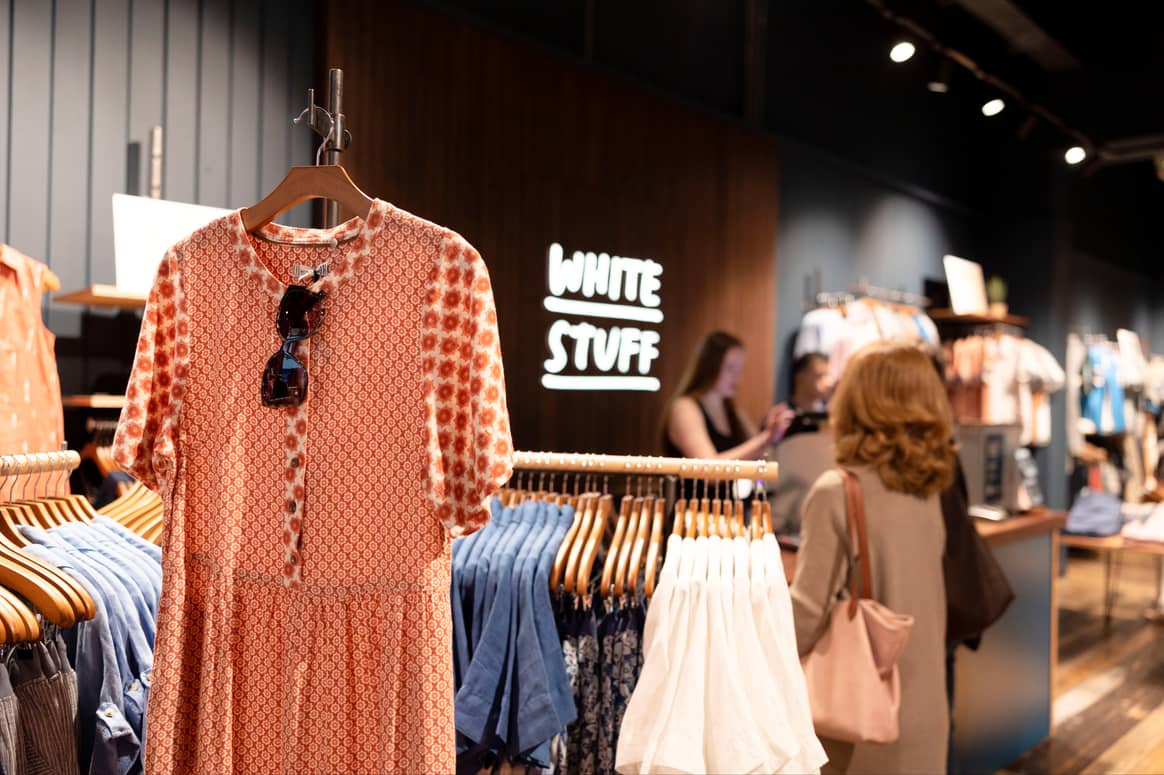Engaged in the clothing industry for 20 years.

‘We’re a million miles an hour right now’: White Stuff’s trading director on modernised transformation
Among the bustling crowd of Who’s Next, White Stuff presented the international industry with a collection that reflected the ongoing refresh at the British label, an underlying transformation that looks to speak to the brand’s loyal customer in a new way.
Within the AW24 assortment of Fair Isle cardigans, corduroy two-pieces and essential prints is a highly curated colour palette of deep plums, subtle pinks, olive greens and sleek navies, shades intrinsically linked to the colder months and now, to the modernisation of White Stuff itself.
The brand’s presence at the Parisian trade show also came ahead of an announcement that it was to be opening a store in Liverpool as part of its shift towards a multi-channel brand model that has triggered a wider retail expansion across the UK.
Such efforts to change course have already been met with financial success for the label, which reported for the 52 weeks to April 29, 2023, a sales uptick of 13.3 percent to 151.4 million pounds, while EBITDA more than doubled from 2.9 million pounds in the previous year to seven million pounds.
At Who’s Next, FashionUnited caught up with trading director Tracey Verghese, who is leading the brand into new territories and sharing its vision for the future.
Let’s start with you and your background in the industry. What brought you to White Stuff?
I was at Marks & Spencer for a long time. Here, you could make a difference but there’s lots of people and I really wanted to go to a smaller brand that needed a transformation, somewhere I could make a change. Not me alone, of course, but with Jo [Jenkins, CEO] and the new team we have really rolled our sleeves up. We have unturned every stone. We’ve taken it back to basics.
It’s been hard work, but it’s been so rewarding. And now we’re seeing the results. So far, the brand has remained behind closed doors, we haven’t really been open to sharing White Stuff outwardly like this. So [Who’s Next] is a really exciting step for us because the team here have done a fantastic job with the branding, colours and logo.
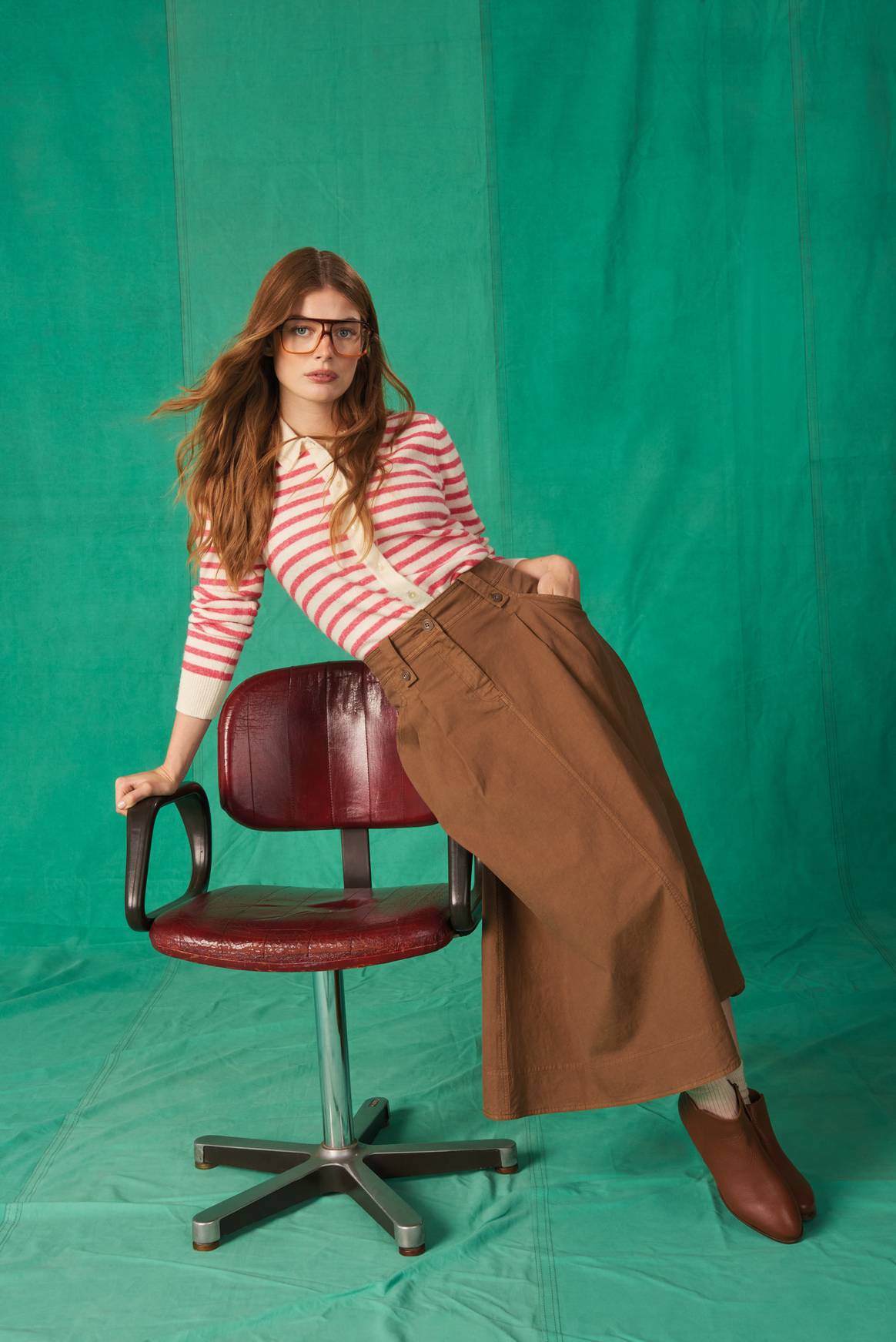
Taking on the role of trading director, what was your initial mission and has that shifted over the past few years?
While it is great that we can show amazing product, for me it was about how to do this [transformation] in a way that allows customers to see us as a great place to shop. How do we take our amazing product from A to B in the best way? There was more to do than I had perhaps thought. The brand accelerated so quickly in the past that it had got lost in the process of bringing the operations alongside it. But rebranding was the right thing to do for our consumer now.
In the past, shops would be the feature as opposed to the product and now it’s more about the customer, it’s about the product. That’s what I think the team has done brilliantly. We’ve modernised 80 percent of our shop estate, and we’ve seen commercial results.
How have you brought the consumer in on this transformation?
She’s responding well to it. We took all of the feedback that we had and developed it, so it’s more about the product and campaigns. Here, we’re focusing more on real people, which came really organically. We found Silvia [Ezer, a retired drama teacher from Muswell Hill] who is in her 80s. She was fabulous in our product. We put her in a social post and it went wild.
We started to feature her more, and then for the spring we completely focused on real people that had applied to be in a campaign. It’s gone down really well. That genuinely came as a bit of a surprise that people wanted to see what [others] do. We’re going to keep running with [this concept].
There had been a positive sales uptick towards the end of last year. How are things going financially following the festive season?
Strong. Full price sales have doubled this month. It’s really good. Not everything’s always perfect, but the women’s category was particularly strong. We had a good Christmas, full price sales being at peak.
There have also been signs of a possible UK retail expansion. Can you share any details on these plans?
We are definitely set to open some more shops this year. Liverpool will be opening imminently. We did just win a bid for a very exciting site – news on that to come soon.
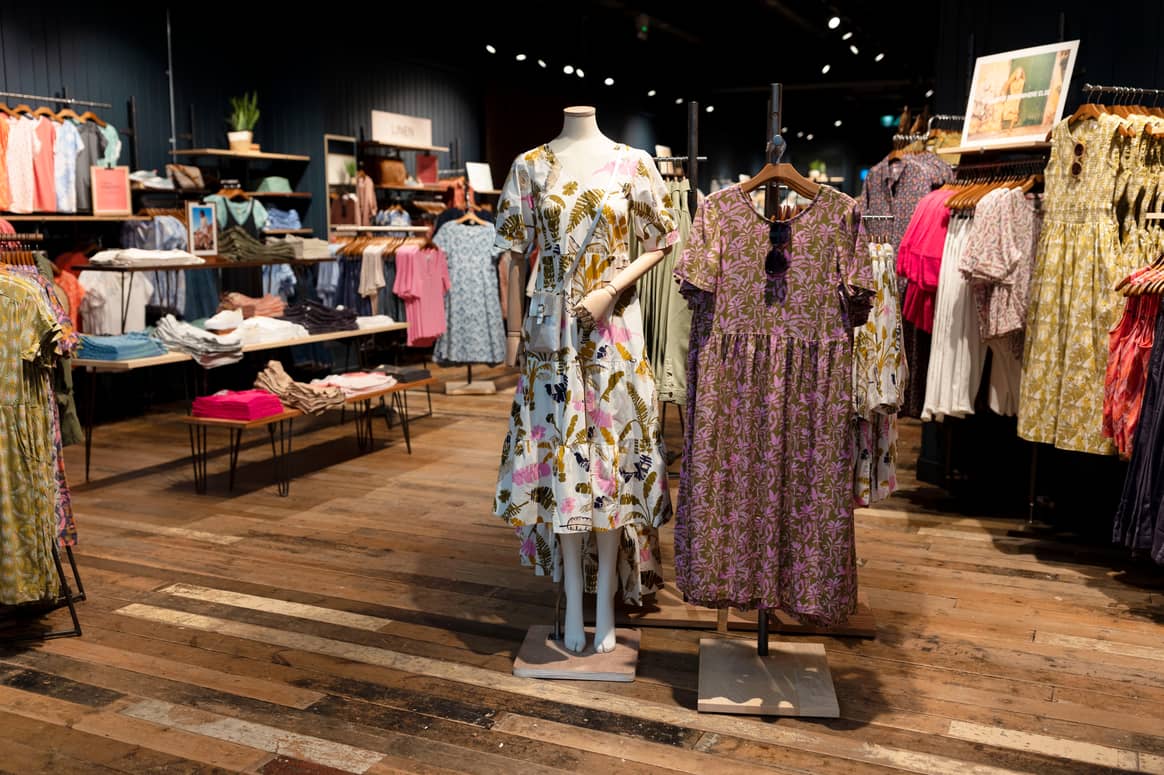
Despite the turbulent market in the UK, why is there a renewed reliance on physical retail?
We’re in the mid-level space, so there’s definitely still headroom for us. Currently, physical retail is not hugely convenient for our customers. We’ve got big geographical gaps, so more openings are really important. I think if we were saturated, there would be no need for us to open new stores, but we’re not. Obviously, the backdrop is tough, so every site that we are opening has to be a home run. We’re not taking a huge amount of risks, but we need to transform – we can’t stop.
What is the significance of third-party retailers and wholesale partners in your strategy?
They are really key for us. It’s all about getting our brand to more customers. We’re not saying it has to be only through shops, just what’s right for her or him. We are in Marks & Spencer and John Lewis, which have been really successful for us. We’re not looking to hugely widen this because I do think we’ll get into a situation where there’s too many channels and it becomes a bit messy. We’re in key ones and we are always open to new possibilities, but we’re on a really good trajectory.
Then there’s wholesale. We’re only in a handful of countries, so for us we are looking at more. France is our key territory. We can always have more customers. We’ve got lots of independents, and we will always look to grow here.
Does your approach to these international markets differ from the UK?
We’re really lucky that we’ve got people based in these markets, and they are not shy to tell me what they want or need. We rely on them and have them in the office multiple times a year. They can then request the right products for them. We use the voice of the market to help us develop the range. We don’t change it, but we may index it up or down on certain categories.
Is the demand from consumers also different?
The best sellers are the best sellers everywhere. They love our ‘Rua’ category, which also remains the same. There are little nuances too, like partywear won’t be great in Germany. They’re not into the sparkle. We have it as an offer, but we won’t put big orders behind them. We may fluctuate the orders based on each market.
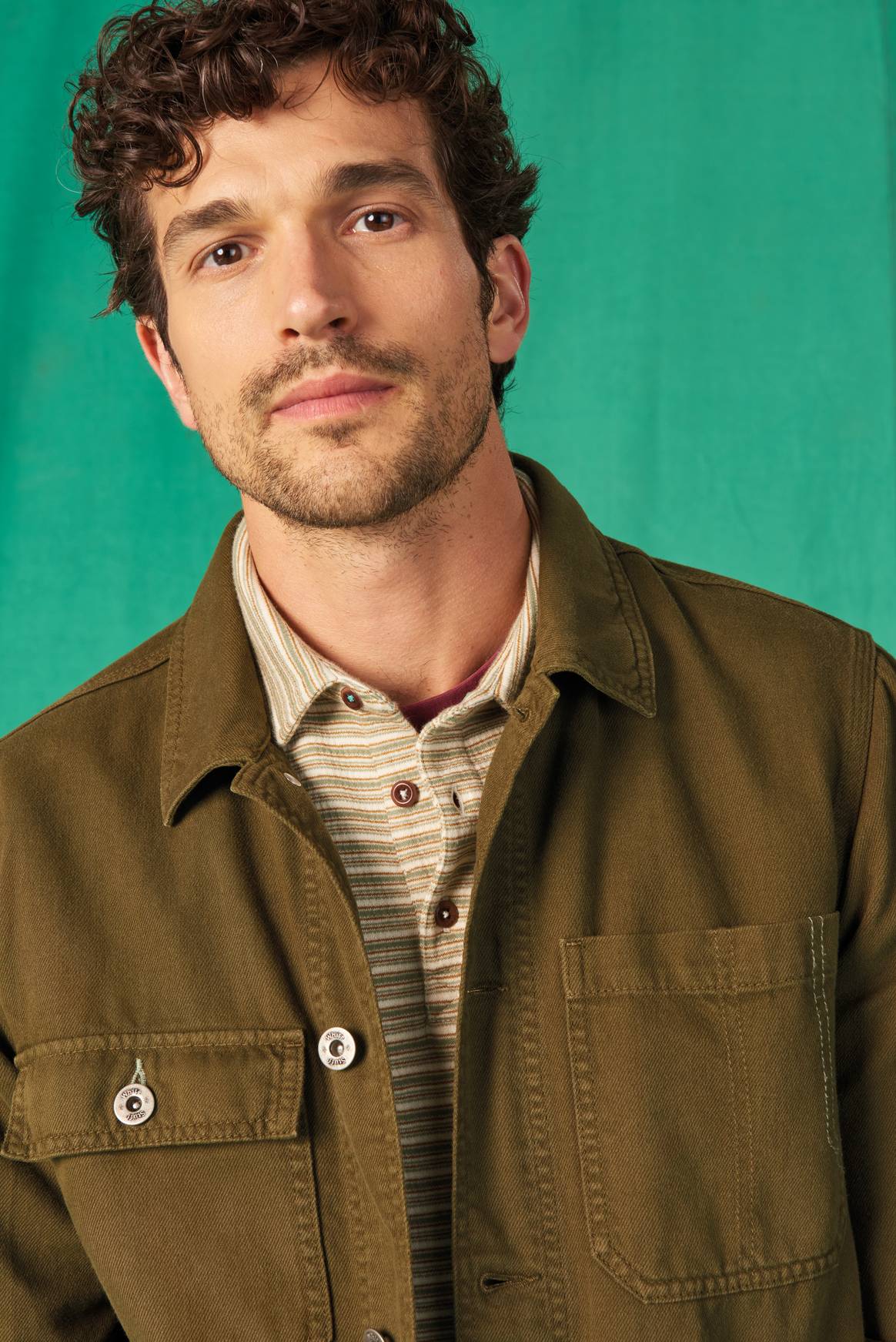
Can you walk me through your categories? What are you showing at Who’s Next?
We have our autumn collection here, so the key categories of dresses, the ‘favourites’, knitwear and then we’ve got some outerwear pieces. We have a lot more outside of this though. We have menswear, kidswear, but you won’t see that at the show. In the UK and internationally we also sell 15 percent menswear. Kidswear is a bit smaller, and then 10 percent accessories and footwear. It’s really a lifestyle brand.
Prints are essential and cashmere is very good in [the French] market. It is also about how the team here sells it. In their showrooms, they really layer and put outfits together. The customer then buys the whole look. We have to sample really early here because they get their orders in early.
Another area that you have seen a refresh is online, with the launch of a new website. Can you tell me a bit about that process?
Our original platform was quite clunky. The speed wasn’t where we wanted it to be. If we wanted to add or change small things, it wasn’t entirely possibly on that platform, so we changed it in July. It’s now launched and [our team] can add the finishing touches so that we can make it more aesthetically pleasing. We can change it daily now, whereas before it would take weeks.
Have you seen a return on investment already?
Conversion increased instantly, the site’s faster, all those things are great. Now the next steps are thinking of things like how do we make it easier for customers to know what size to buy. We’re just starting the journey of making it right for the customer. What does she want to see? It’s going to be a huge learning curve, and a huge success for our brand in the next year or so.
Let’s talk more about expansion plans. Which markets are you seeing interest from?
So two markets that we’ve just touched are the Czech Republic and New Zealand. Here, there have been new customers that have come aboard this year and we’ve had huge successes, with 100 percent sellouts on some things. We’re also looking at the US – that’s imminent.
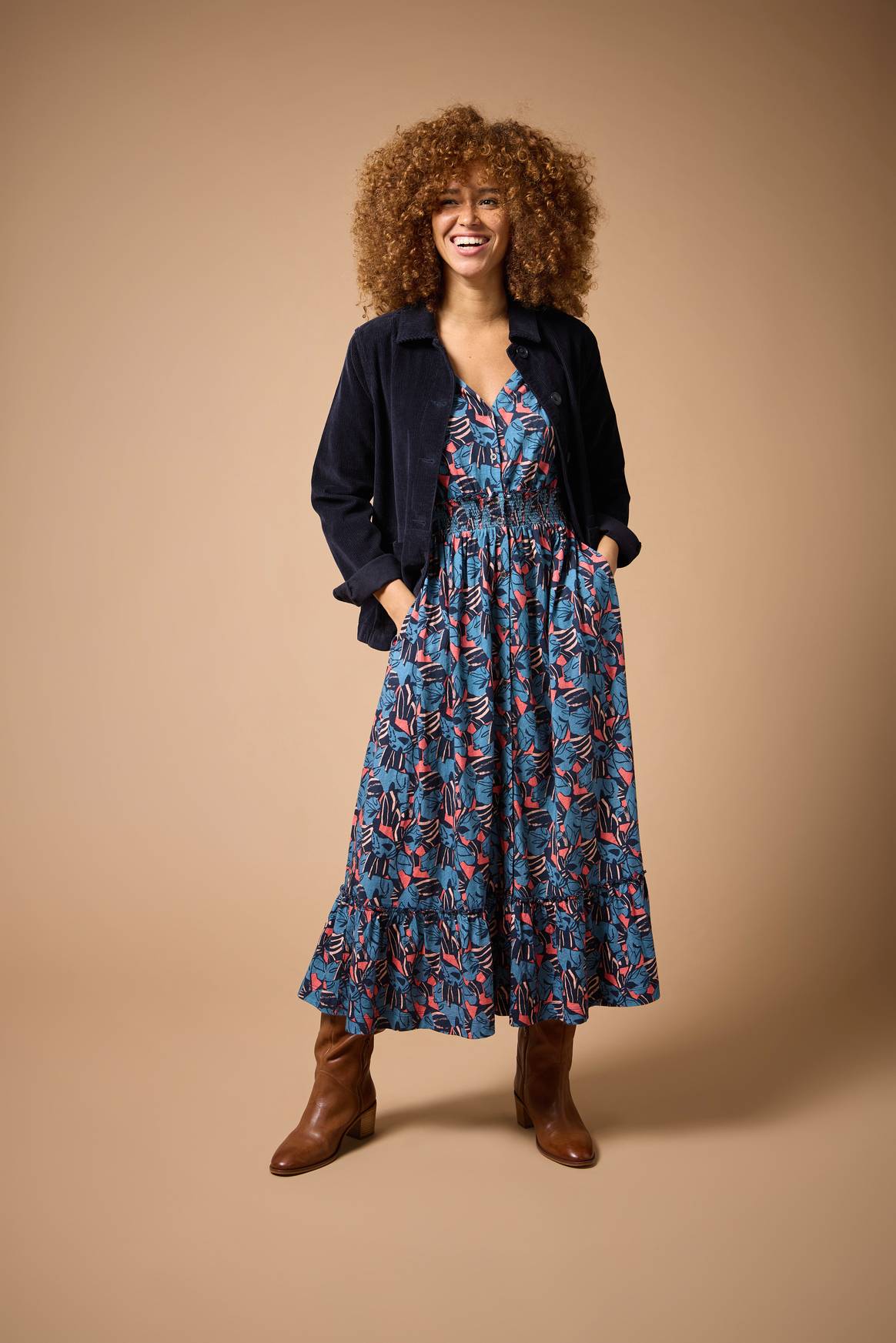
Are there any challenges when approaching these kinds of markets?
There are more operational challenges, such as tax setbacks or Brexit. Other retailers have not succeeded in these locations, so if I’m honest, we’re swooping up some of that. We’re getting a lot of interest from potential partners and agents interested in selling our brand, we just want to make sure we can get samples to them on time. We won’t enter until we’re completely operationally ready. We’re at that place with many. The US comes with tax setbacks, so that’s really the only barrier there. We work through them and we work with external companies to help us. At the core is still the product.
Recent years have caused many disruptions to the supply chain, and now with obstacles surrounding the Red Sea, this looks ongoing. Are these things that you have also had to consider?
I feel like there’s something like this every six months. What we did is we built in some buffer time. We plan for success, prepare for failure. We have to make sure we have all of this together because we’ve got so many customers – 500 in wholesale alone – it is not an option to disappoint them. We always build in time to make sure that we are on our A-game and it doesn’t always go to plan.
In terms of the Suez Canal, we’re rebooting, we’re keeping an eye on it every single day, making sure that we’re speaking to suppliers. The team is used to this, because the pandemic obviously caused delays and then there was Ukraine. There’s always a challenge, but I feel like the last five years have never been as turbulent.
Do you see a light on the horizon?
No, in my mind there’s always a good reason to be prepared. You never know what’s on the horizon. I think some people, like our customers, need a bit of escapism. We have to try our very best to make sure that we’re getting what they want. They’re also very understanding. We’re keeping a full eye on how [the Red Sea situation] unfolds. This is merchandising’s number one focus right now.
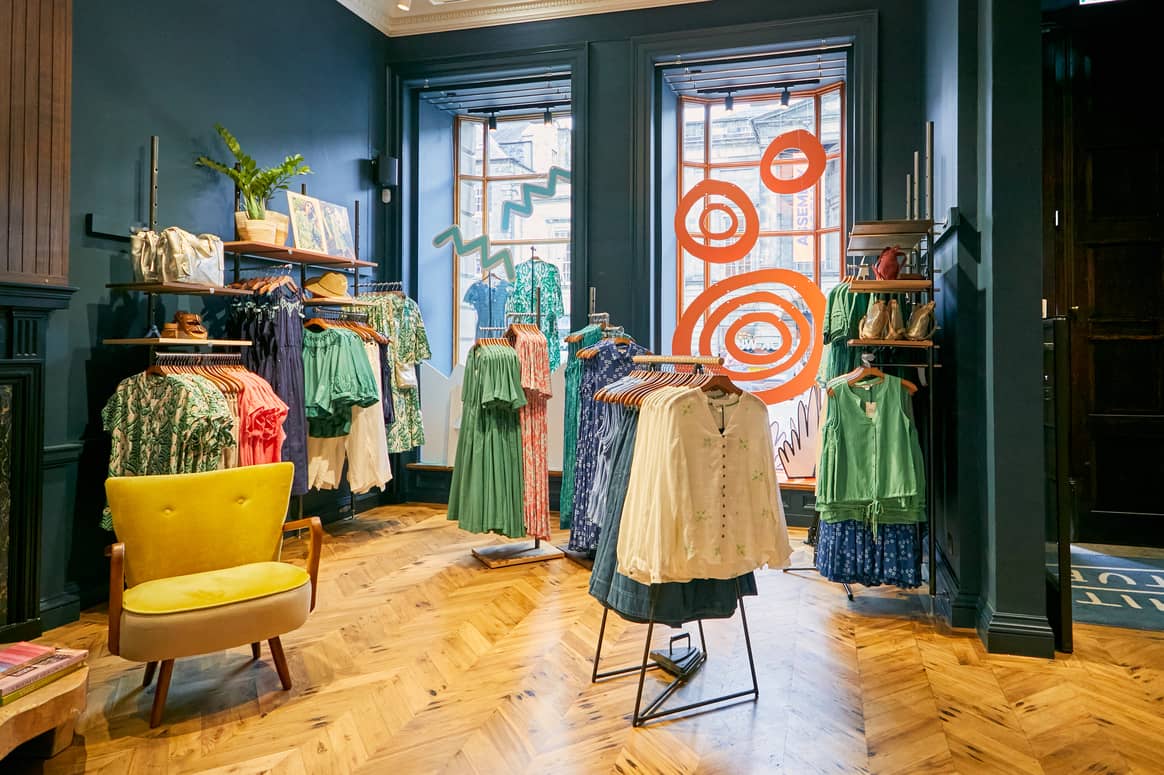
The EU will also be implementing a lot of sustainability and traceability regulations in the coming years, as will the UK. How are you adapting to these shifts?
We have people in the office that are entirely focused on this. We have a sustainability and ESG manager [Jack Nunn], we have an ESG committee. Paula [Bonham Carter] is our product director and that’s all she talks about. It’s a big part of the strategy, but we don’t usually talk about it because for us it’s just everyday.
How important is it to bring customers into the conversation on this topic?
We do quite a lot of surveys. Our customer loves talking to us and she told us that [sustainability] is not the number one thing for her to make a [purchase decision]. She still expects us to do it. It’s just part of the company’s heritage, really. But we have to keep educated because all these new elements are coming into play. The Fair Trade managers keep on top of this. It’s more about traceability for us.
What kind of shifts have you seen in your main production countries?
India and Bangladesh are the key areas where we produce. The people we work with in Bangladesh are quite big suppliers. We haven’t had any impact as such just yet, but we’re keeping an eye on it. They’ll have different sites in different countries, so sometimes we may take production out of one of their sites and put it in another. So far so good, but again keeping an eye on it.
What goes into selecting these factories?
There’s a whole sustainability checklist. Product comes first. Can they make an amazing product that our customer will like? Then comes costing. Then we check out their factories, we check all their credentials, we speak to other people. We don’t really bring on new factories regularly, we’ve got our core partners, some we have worked with for years and years. We try to keep it quite family-orientated. They’re honest with us, we’re honest with them, there’s a respect level.
Looking ahead into the near future, where do you envision White Stuff going?
We’re a million miles an hour right now: making sure the branding is key, making sure we’re getting products in front of her or him that they love. Keeping ahead of them is key, but also not resting on our laurels. The product needs to keep upping its game. If we’re going to be in front of more people, are we positioned in the right place? There’s a lot of IT development going on in the background to make sure that that’s easy. We’ve got a lot of new projects that are landing over the next year IT wise. There’s that ‘watch this space’ kind of energy.
